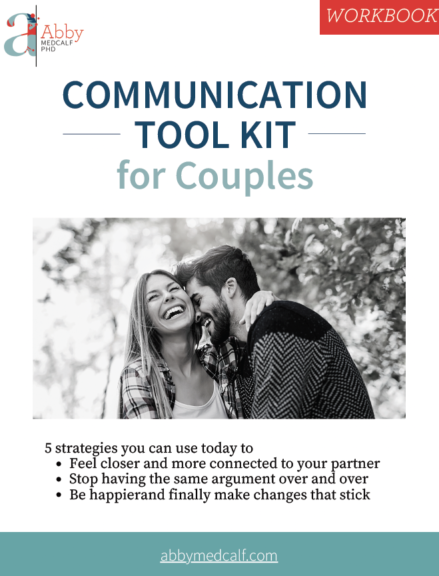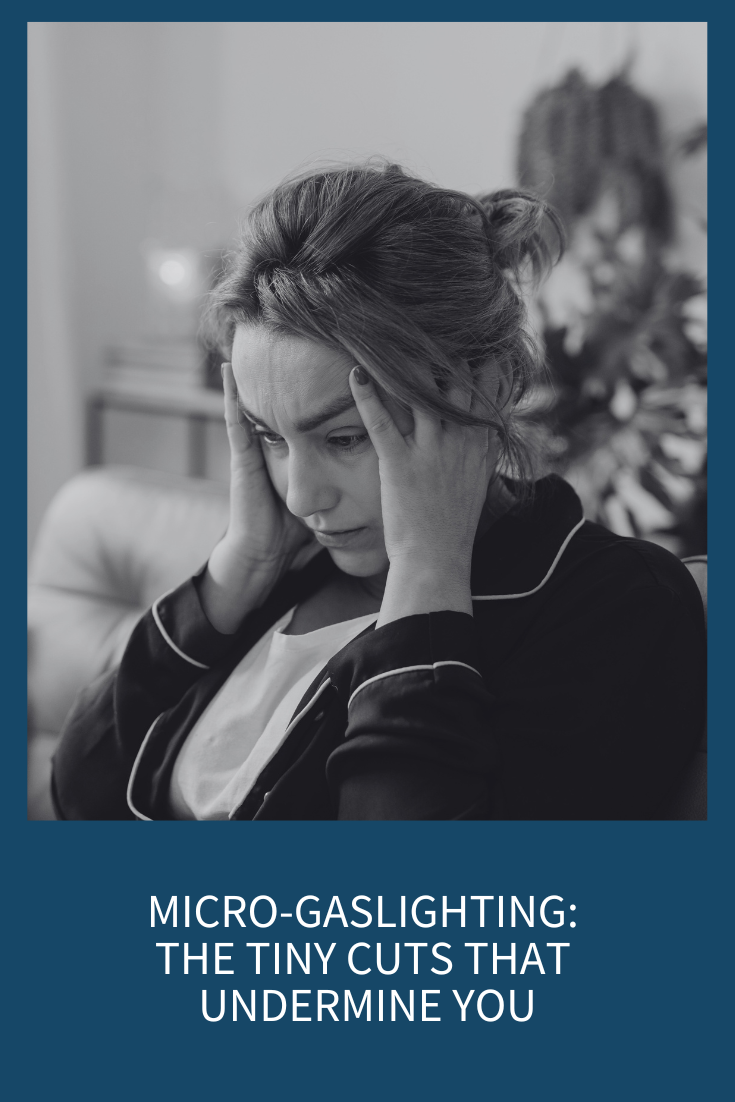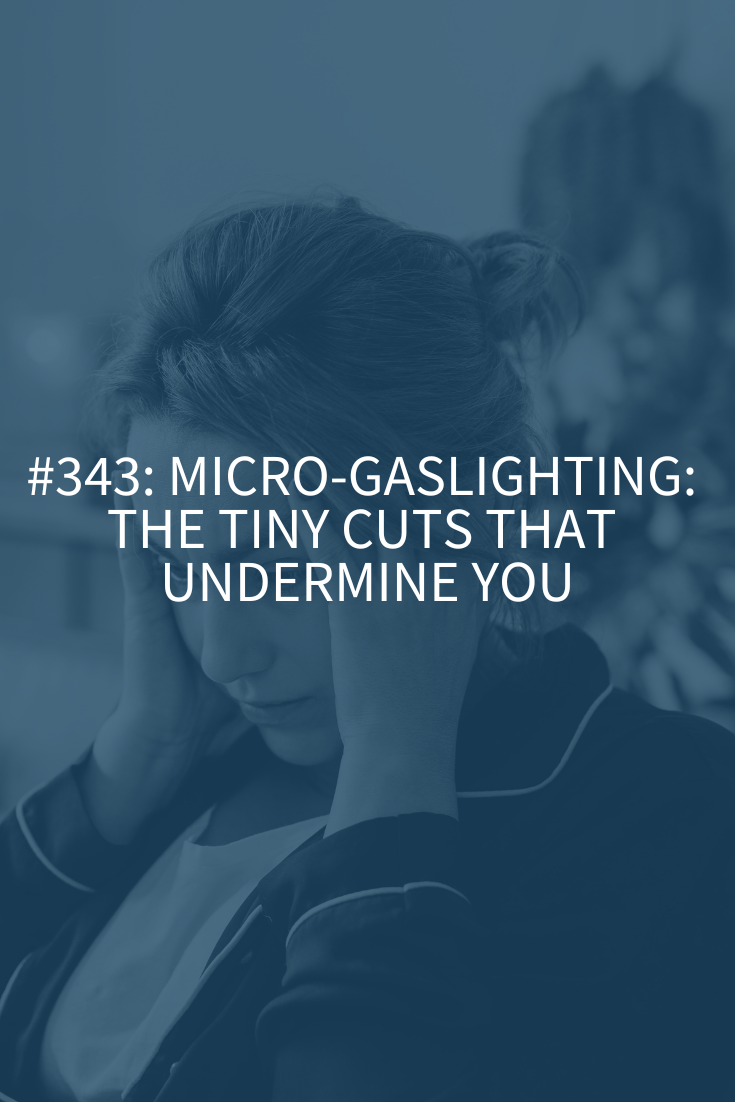
The research has consistently shown that how you attached to your parents or caregivers as a child affects how you connect in your current adult relationships. Your attachment style affects everything from what romantic partners (and friends) you choose, what issues you’ll repeatedly face in your relationships, and even how your relationships will end. Today you’ll learn to identify your attachment style so you can begin to understand why you do what you do in your various relationships, why you get stuck and how to move forward.
10-minute read
Way back in the first season of my podcast, I discussed attachment styles in episode 48. Today I’m doing a massive update and expanding on that knowledge.
I want to give one caveat before we jump in. I’m going to give you a lot of information today so you can identify your attachment style and how it’s affecting your relationships. However, to be 100% sure of your style, you need to meet with a trained mental health professional who can administer one of the reliable tests that have been created. These include the Adult Attachment Interview or the Adult Attachment Projective test.
Where Does All This Attachment Stuff Come From?
In the 1940s, John Bowlby, a developmental psychologist and psychiatrist was interested in what happened when children and caregivers were separated for brief or longer amounts of time. He believed that how we attached to these caregivers affected our sense of security, our personality development, and our ability to form stable relationships throughout our life.
His theory, known as (you guessed it) Attachment Theory, was further developed throughout the 1960s by his student Mary Ainsworth. Attachment Theory has been researched now for decades and it has become one of the basic tenants of psychology and how we think about human development and behavior.
In the 1980s, psychologists Cindy Hazan and Phillip Shaver began looking at whether how we attach as children could relate to our later adult romantic relationships. Since then, there’s been tons of research and there’s a lot of agreement: how you formed attachments as a kid definitely affects your later relationships.
What is Attachment?
Simply put, attachment is the emotional bond you develop with another person, and it reflects the trust and security you feel in that relationship.
The exact terminology used in Attachment Theory differs depending on who’s doing the research and what you’re reading. There are two main categories of attachment styles: Secure and insecure. The insecure category is then subdivided into a few different styles. When I covered this topic a few years ago, I talked about two insecure styles, but today I’m going to broaden that to the three insecure styles that are most common in the literature.
The other thing I’m going to do differently is explain each attachment style from three perspectives: how it shows up when you’re a kid, how it looks in adult relationships, and how it can affect your parenting style.
So, let’s jump in!
Secure Attachment Style
Kids who developed this way basically saw their primary caregiver as a safe base of operations. From that safety zone, they could explore their world, feeling confident and (you guessed it) secure. They end up trusting others and feel comfortable relying on the people they’re close to.
Securely Attached Adults
Securely attached kids grow into securely attached adults who generally have one or more of the following characteristics:
- They trust other people, so will ask for help and support.
- While they like being in relationships, they’re also comfortable being alone.
- They’re able to regulate their emotions well.
- They’re more effective communicators and can manage conflict well.
- They’re comfortable with intimacy and emotional closeness.
- They’re self-reflective and open in their relationships.
- They tend towards higher self-esteem.
- They’ll take risks and put themselves out there.
- Because they trust other people’s intentions, as well as themselves, jealousy or hatred are uncommon.
- Overall, they feel worthy of love and don’t need a lot of reassurance.
Securely Attached Parents/Caregivers
- As parents, they’re very good at regulating their emotions, so are clear and direct with their kids.
- They exhibit very good boundaries with their children; they have rules but back them with warmth and love.
- They’re consistent.
- They’re accepting of their children’s differences.
- They’re very attuned to their children’s needs while not being overly worried or anxious. They’re attentive without smothering or helicoptering.
- Overall, they parent with an open, compassionate heart.
Insecure Attachment Styles
While there’s only one secure attachment style, depending on what research or theory of attachment styles you’re looking at, there are a variety of insecure attachment styles. In my previous podcast episode, I mentioned two for the sake of ease and clarity. But today, I promised to broaden your understanding, so I’m going to discuss the three most commonly referred to styles: Anxious, avoidant, and disorganized.
The Anxious Attachment Style
The anxious (also known as anxious-ambivalent or anxious-preoccupied) attachment type tends to worry extensively about their relationships. People with this style tend to be insecure about themselves, have low self-esteem, and have the need to be in relationships and rely on others. These folks are often clingy and needy, they analyze and overthink the meaning behind what others say and do, and they’re usually anxious and stressed about how they’re perceived.
Anxiously Attached Adults
- Are insecure in all their relationships on some level, and this drives their behavior
- Ultimately, they fear being abandoned or rejected
- Are very sensitive to being criticized (and will see almost all feedback as criticism or in a negative light no matter how careful you try to be when you speak to them)
- Have a hard time being alone
- Tend towards low self-esteem and low self-confidence
- Feel unworthy of love so need constant reassurance, validation, or approval
- Tend towards jealousy
- Have a hard time trusting others in all things and will often “do it themselves” and take on too much
- Will get emotionally dysregulated easily depending on other people’s moods
- Engage in a lot of people pleasing but then feel resentful that they’re not appreciated enough for their sacrifices
- Readily blame themselves first for anything that goes wrong in any of their relationships
Anxiously Attached Parents/Caregivers
- Often worry too much about their children and what they’re doing. This might show up as thinking that the wrong pre-school choice is going to ruin their entire lives or spend too much time worrying about what they’re eating and might spend hours a day researching, cooking, and preparing meals/snacks for their kids
- Get over-involved in their children’s day-to-day lives
- Over-involve their children in their own emotional needs and feelings
- Create enmeshed or thin boundaries with their children
The Avoidant Attachment Style
The avoidant (also known as the dismissive-avoidant or anxious-avoidant) is independent, confident, and self-sufficient (or at least that’s how they appear to be). People with this attachment style don’t want to rely on others; they want to be in control. If this is your style, you can be distant and aloof in relationships, and you’re unlikely to open up to others, especially when it comes to expressing your private thoughts or emotions.
Avoidantly Attached Adults
- Generally seem confident and sociable
- Have a hard time identifying, feeling, noticing, or expressing their feelings
- Are more comfortable alone than with others
- Need to be in control of their environments so they can decide how much to let others in
- Can be dismissive of others, especially when it comes to their feelings
- Have commitment issues that show up in a variety of ways. It could be difficult committing to a long-term relationship or, if they are in one, they might do things like keep their money separate and/or not be willing to take on their partner’s debt
- Don’t need emotional intimacy and keep others at arm’s length emotionally
Avoidantly Attached Parents/Caregivers
- Might not notice their children’s emotional needs and use a “broad brush stroke” when they do address them. They can minimize their children’s emotional needs or label them as too much or spoiled
- Can be very controlling and overly strict with their kids
- Expect their kids to be independent and able to stand up for themselves
Disorganized Attachment Style
Disorganized attachment style was first introduced in 1986 by psychology professors Mary Main and Judith Solomon.
People with a disorganized attachment style tend to switch back and forth between anxious and avoidant, so their behavior is extremely inconsistent, and they have no trust in other people. As children with this style, they’re both aggressive and fearful of their caregivers because they’re likely growing up in a very disorganized, negative household where they’ve been rejected, hurt, or even ridiculed by their parent or caregiver. They feel no safety anywhere. Usually, their parents were victims of trauma or abuse and likely weren’t treated.
Disorganized Adults
- It’s hard to predict how they’ll act or what they’ll do in a given situation
- Can’t regulate their emotions the majority of the time
- Have high levels of anxiety and worry
- Have outsized fears of rejection and abandonment
- Don’t trust others in almost any situation
- Are prone to not only mood disorders, but to personality disorders, substance use disorders and are more likely to engage in self-harming behaviors
Disorganized Parents/Caregivers
- Because they have their own unresolved trauma, being a parent is a fearful, anxious place. Any time their child approaches, they’re torn about what to do
- Likely alternate between being aloof or ambivalent and overly clingy with their kids
- Feel emotionally overwhelmed by being a parent
Hey Abby, Can I Become More Securely Attached?
As you might imagine, the research shows that those who are more securely attached are happier and more satisfied in their relationships and life as a whole. The good news is that most people are securely attached. In a famous study by Hazan and Shaver, they found that 56% of people in their study identified themselves as secure, 25% identified as avoidant, and 19% as anxious (disorganized wasn’t studied in that study since it was very new on the scene).
The big question obviously is: “Can you change and become more securely attached?” The good news is that the short answer is “yes,” you can absolutely cultivate a more securely attached style, but it’ll take some work and effort. You’re going to need to uncover the ways you’re currently defending yourself from being emotionally close in your relationship(s).
Top 5 Tips for Becoming More Securely Attached
-
- 1. You’re going to have to work on seeing what you haven’t seen before, and therapy is the best way to do that. You’re basically a fish who doesn’t know it’s wet. Having a therapist give you feedback about what you’re doing, and your subconscious motivations is the first step in changing how you react in your relationships. If you’re anxiously attached, you likely need to work on self-esteem. For those who are more avoidantly attached, it’s about learning to be vulnerable and connecting to your partner with empathy and compassion. For those with disorganized attachment, it will likely take more time in therapy to work through any unresolved/undischarged childhood trauma.
-
- 2. Practice Identifying and Sharing Feelings. This means that you’re going to need to up your mindfulness game. I highly recommend setting a reminder on your phone three times a day. When it goes off, stop and identify three real feelings you’re having. No “good, fine, or OK.” Instead, use a great feelings list to dig a little deeper and identify what you’re really feeling in a moment. Identifying your feelings is a skill, and like any skill, you’ll get better with practice.
-
- 3. Mindfulness. I know, I know. You’re sick and tired of me talking about mindfulness, but guess what!?! You won’t be able to make any of these changes if you’re not aware in your moments that you’re acting in old defeating behaviors.

- 3. Mindfulness. I know, I know. You’re sick and tired of me talking about mindfulness, but guess what!?! You won’t be able to make any of these changes if you’re not aware in your moments that you’re acting in old defeating behaviors.
-
- 4. Do Connecting Activities. Sitting in front of the TV with your partner isn’t necessarily connecting time; it’s likely just downtime. Find ways to connect, even briefly, with your partner. This can mean walking the dog together after dinner, having a morning gratitude chat daily over coffee, or taking a ballroom dance class together once a week. Whatever it is, set an intention for connection!
5. Take a Quiz! Figuring out your attachment style and learning more about it is key to making lasting changes. You can take a quiz to figure out your style here: http://www.web-research-design.net/cgi-bin/crq/crq.pl
- 4. Do Connecting Activities. Sitting in front of the TV with your partner isn’t necessarily connecting time; it’s likely just downtime. Find ways to connect, even briefly, with your partner. This can mean walking the dog together after dinner, having a morning gratitude chat daily over coffee, or taking a ballroom dance class together once a week. Whatever it is, set an intention for connection!
Resources for How Your Attachment Style Affects Your Personal Relationships
How Attached Are You to Your Partner?
Hoffman Institute Feelings List
How to Make Mindfulness a Habit
How to Set Intentions in Just 18 Seconds (aka The 18-Second Shift)
Quiz: Attachment Styles and Close Relationships






